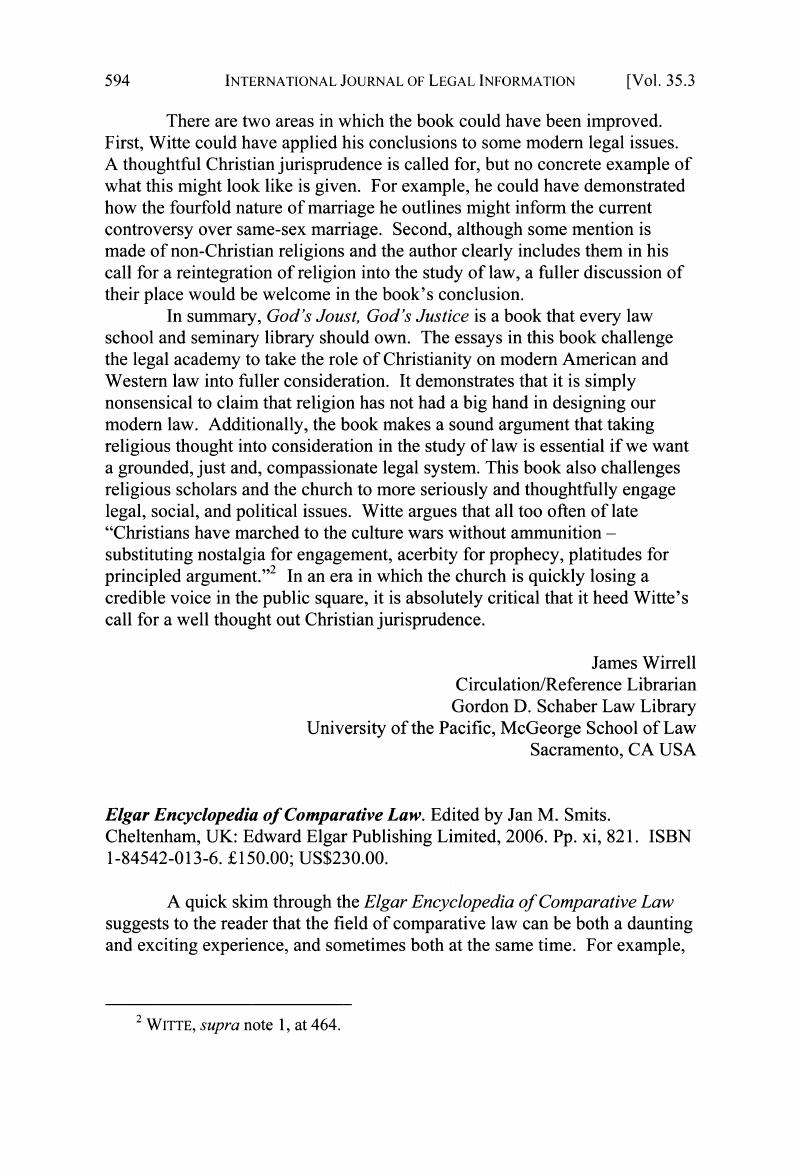No CrossRef data available.
Published online by Cambridge University Press: 28 February 2019

2 Witte, supra note 1, at 464.Google Scholar
3 The as yet unfinished International Encyclopedia of Comparative Law has long been the standard comparative law reference tool. Ulrich Drobnig and Konrad Zweigert. International Encyclopedia of Comparative Law. Tübingen: J.C.B. Mohr, 1973-. The set aspires to be “the most extensive and thorough examination of comparative law on the international level ever published. It incorporates not only detailed descriptions of the legal systems of more than 150 countries but, above all, thoroughly documented comparative analyses of the main issues in civil and commercial law and related issues worldwide.”Google Scholar
http://www.brill.nl/default.aspx?partid=10&pid=18425 Thirty nine installments of its planned 150 chapters have appeared to date. Its slow progress toward completion suggests the difficulty of attempting such a complex work. More recently Reinhard Zimmermann and Mathias Reimann have edited the one volume, The Oxford Handbook of Comparative Law (Oxford: Oxford University Press, 2006).Google Scholar
4 Michael G. Faure. “Accident compensation.” Chapter 1, pp. 1–17 Google Scholar
5 Jacques H. Herbots. “Interpretation of contracts.” Chapter 30, pp 325–347Google Scholar
6 The title of the chapter “American law” is qualified by the parenthetical (United States). Why not simply call the chapter “United States law” and avoid the politically incorrect conflation of the narrower “United States law” with the potentially broader “American law”?Google Scholar
7 Full written transcript of Scalia-Breyer debate on foreign law. http://www.freerepublic.com/focus/f-news/1352357/posts Google Scholar